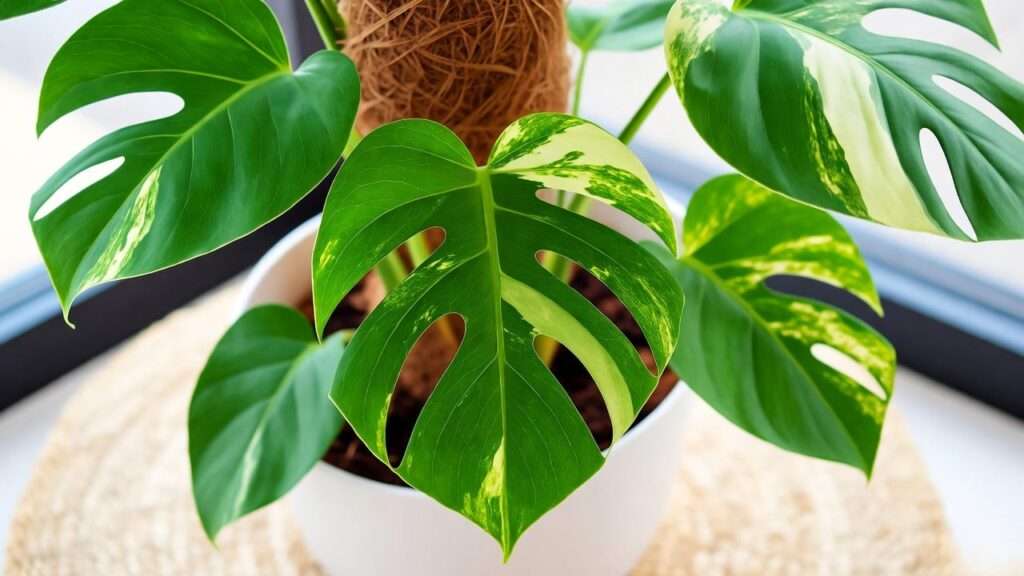Imagine a plant so striking it transforms your space into a tropical masterpiece—meet the white monstera plant, a variegated gem that’s stealing the hearts of plant lovers everywhere. With its creamy white and green leaves, this stunner is more than just a pretty face; it’s a rewarding challenge for any plant enthusiast. Whether you’re a seasoned collector or a newbie dreaming of a lush indoor jungle, caring for a white monstera plant can feel daunting. But fear not! This comprehensive guide, crafted with insights from horticultural experts and years of hands-on experience, will equip you with everything you need to keep your variegated beauty thriving. From light and watering to propagation and pest control, we’ve got you covered with practical, actionable tips. Let’s dive into the world of white monsteras and unlock their full potential! 🌟
What is a White Monstera Plant? 🌟
Understanding the Variegated Monstera 🌿
The white monstera plant, often a variegated cultivar of Monstera deliciosa like the ‘Albo’ or ‘Thai Constellation,’ is celebrated for its stunning, creamy-white patches contrasting against lush green foliage. Variegation occurs due to a lack of chlorophyll in certain leaf cells, creating unique patterns that make each plant a living work of art. The ‘Albo’ boasts bold, irregular white patches, while the ‘Thai Constellation’ features speckled, creamy variegation that’s slightly more stable. According to Dr. Emily Hart, a botanist specializing in tropical plants, “Variegation is a genetic mutation that reduces chlorophyll, making these plants both beautiful and delicate.” This delicate balance means white monsteras require extra care to maintain their vibrant patterns.
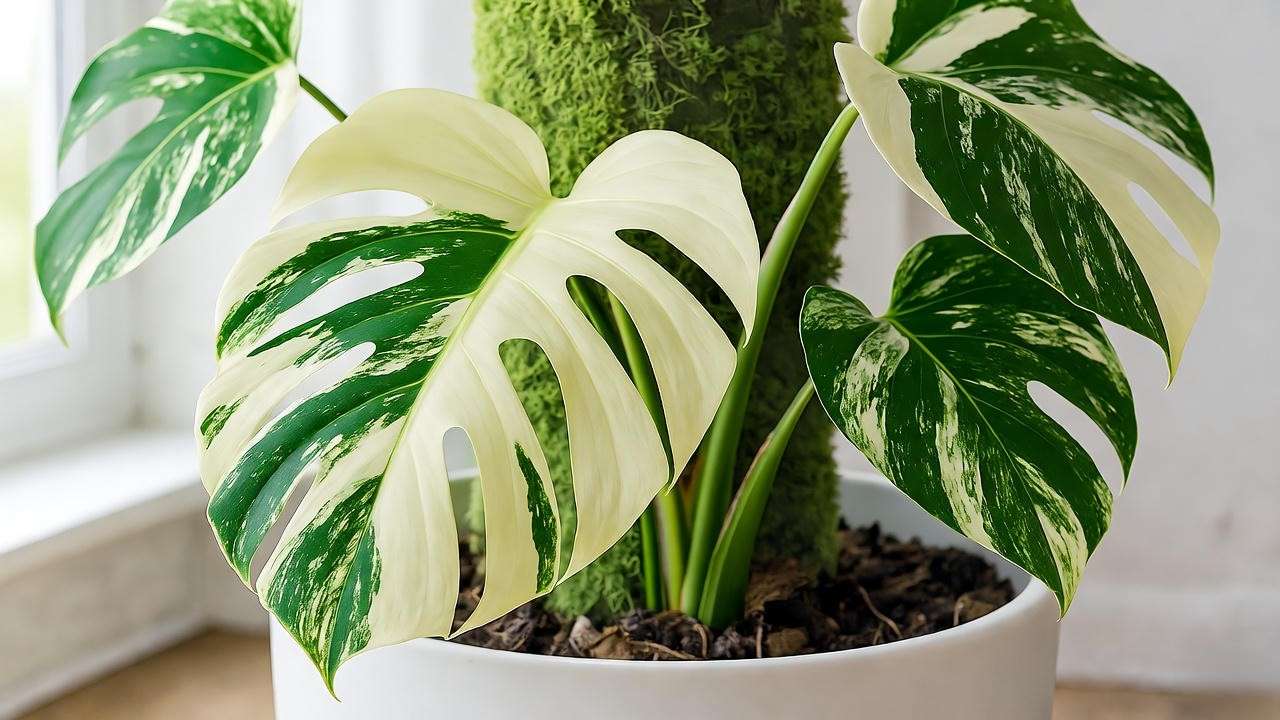
Why Choose a White Monstera? 😍
Beyond their jaw-dropping aesthetics, white monsteras are a status symbol in the plant world, often fetching high prices due to their rarity. They elevate any space, from minimalist apartments to boho-chic homes. However, their higher care needs and cost (often $50-$500+) mean they’re not for the faint-hearted. If you’re ready to invest time and love, the reward is a showstopping plant that sparks joy and envy. This guide ensures you’re prepared for the journey!
Ideal Growing Conditions for White Monstera Plants 🌞
Light Requirements ☀️
White monsteras thrive in bright, indirect light, which supports their variegated leaves’ unique patterns. Direct sunlight can scorch delicate white patches, while low light may cause variegation to fade, leaving you with greener leaves. Aim for a spot near an east- or north-facing window, where filtered light mimics their tropical habitat. If natural light is limited, consider a grow light (6500K full-spectrum works best). Pro Tip: Use a light meter app like Photone to measure light intensity—aim for 200-400 foot-candles for optimal growth. Rotate your plant every few weeks to ensure even light exposure.
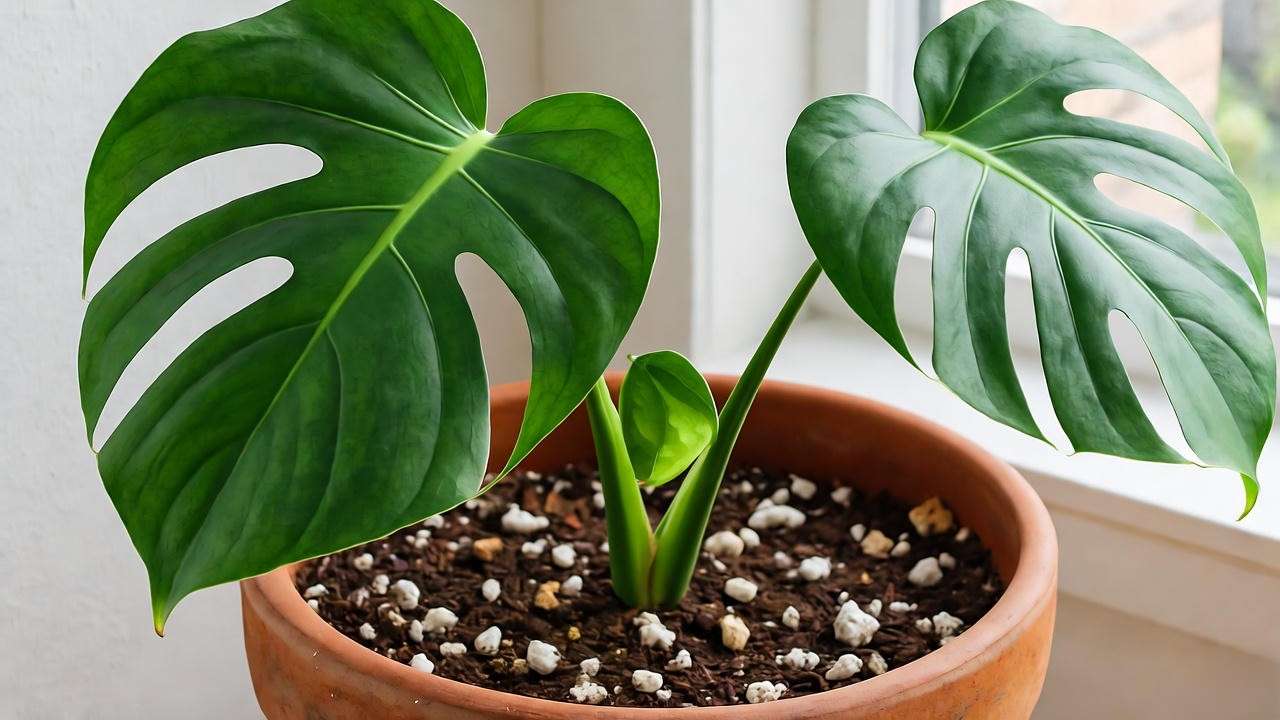
Temperature and Humidity 🌡️💧
As tropical natives, white monsteras prefer temperatures between 65-80°F (18-27°C). Avoid placing them near cold drafts or heating vents, which can stress the plant. Humidity is critical—aim for 60% or higher to prevent crispy leaf edges. Use a humidifier, set up a pebble tray with water, or group your monstera with other plants to create a humid microclimate. Example: A small tabletop humidifier like the Levoit Classic 100 can maintain ideal moisture levels in a small space.
Soil and Potting Needs 🪴
A well-draining, airy soil mix is non-negotiable. Combine equal parts potting soil, perlite, and orchid bark for a chunky aroid mix that promotes healthy roots. Choose a pot with drainage holes—terracotta or ceramic works well for breathability. Repot every 1-2 years or when roots outgrow the pot. DIY Soil Recipe: Mix 1 part peat-based potting soil, 1 part perlite, 1 part orchid bark, and a handful of activated charcoal for extra aeration and purity.
Watering and Feeding Your White Monstera 💦
Watering Best Practices 🚿
Overwatering is the top killer of white monsteras. Water when the top 1-2 inches of soil feel dry, typically every 7-10 days, depending on your climate. Use room-temperature water to avoid shocking the roots. Check for signs of trouble: yellowing leaves often indicate overwatering, while drooping, curling leaves suggest underwatering. Pro Tip: Invest in a $10 moisture meter to take the guesswork out of watering. Always empty the saucer under the pot to prevent root rot. In winter, reduce watering as growth slows.
Fertilizing for Growth 🌱
Feed your white monstera monthly during spring and summer with a balanced liquid fertilizer (20-20-20) diluted to half strength. Avoid fertilizing in fall and winter when the plant rests. Over-fertilizing can cause nutrient burn, visible as brown, crispy leaf tips. “Variegated plants need careful nutrient balance due to lower chlorophyll,” says plant nutritionist Dr. Sarah Lin. Example: Try a fertilizer like Miracle-Gro Indoor Plant Food, applying 1/4 tsp per gallon of water. Flush the soil with plain water every few months to prevent salt buildup.
Pruning and Propagation Techniques ✂️
Pruning for Health and Aesthetics 🌿
Pruning keeps your white monstera healthy and shapely. Remove yellow or damaged leaves with clean, sharp scissors to encourage new growth. Trim leggy stems to maintain a compact shape, especially if you’re training it on a moss pole. Pro Tip: Sterilize your tools with rubbing alcohol to prevent disease spread. Prune in spring for best results, as the plant is actively growing. Always cut just above a node (the bumpy spot where leaves emerge) to avoid stressing the plant.
Propagating Your White Monstera 🌱
Propagating a white monstera is a rewarding way to multiply your collection or share with friends. The most reliable method is stem cutting:
- Choose a healthy stem with at least one node and a variegated leaf.
- Cut below the node with a sterilized knife.
- Place the cutting in water or sphagnum moss; keep it in bright, indirect light.
- Roots should appear in 2-4 weeks. Transfer to soil once roots are 2-3 inches long.
To preserve variegation, ensure the cutting includes white leaf sections, as non-variegated cuttings may revert to green. Example Timeline: Week 1: Place cutting in water. Week 3: Roots emerge. Week 5: Pot in soil. Avoid common mistakes like cutting below a node or letting the cutting dry out.
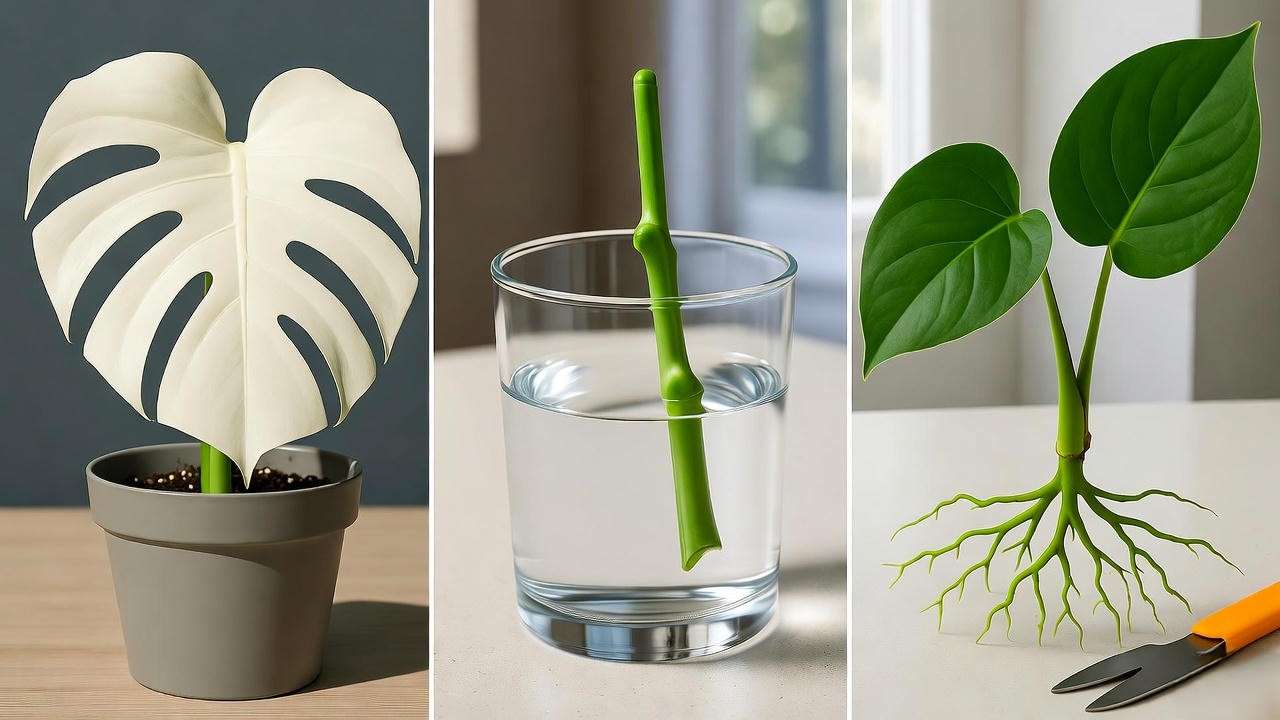
Common Problems and Solutions 🐞
Pests and Diseases 🕷️
White monsteras, like other houseplants, can attract pests such as spider mites, mealybugs, and scale. Spider mites, tiny red or white critters, thrive in dry conditions and leave fine webbing on leaves. Mealybugs appear as white, cottony masses in leaf axils. Check your plant weekly, especially under leaves and along stems. For treatment, wipe leaves with a damp cloth, then apply neem oil or insecticidal soap (diluted per instructions). Pro Tip: Isolate new plants for 2 weeks to prevent pest spread. To prevent infestations, maintain high humidity and avoid overcrowding plants. If fungal issues like powdery mildew arise, improve air circulation with a small fan and reduce overhead watering.
Leaf Issues and Variegation Loss 🍂
Leaf problems are common with white monsteras due to their sensitive variegation. Browning tips often signal low humidity or overwatering, while yellowing leaves may indicate root rot or nutrient deficiency. If variegation fades, insufficient light is usually the culprit. “Variegated plants are prone to stress from environmental fluctuations,” notes plant pathologist Dr. Maria Torres. To revive a struggling plant, adjust light to bright, indirect levels, check soil moisture, and trim damaged leaves. Example: If leaves yellow, lift the pot to check for soggy soil; repot with fresh mix if needed. Regularly dust leaves to boost photosynthesis, especially for white patches with less chlorophyll.
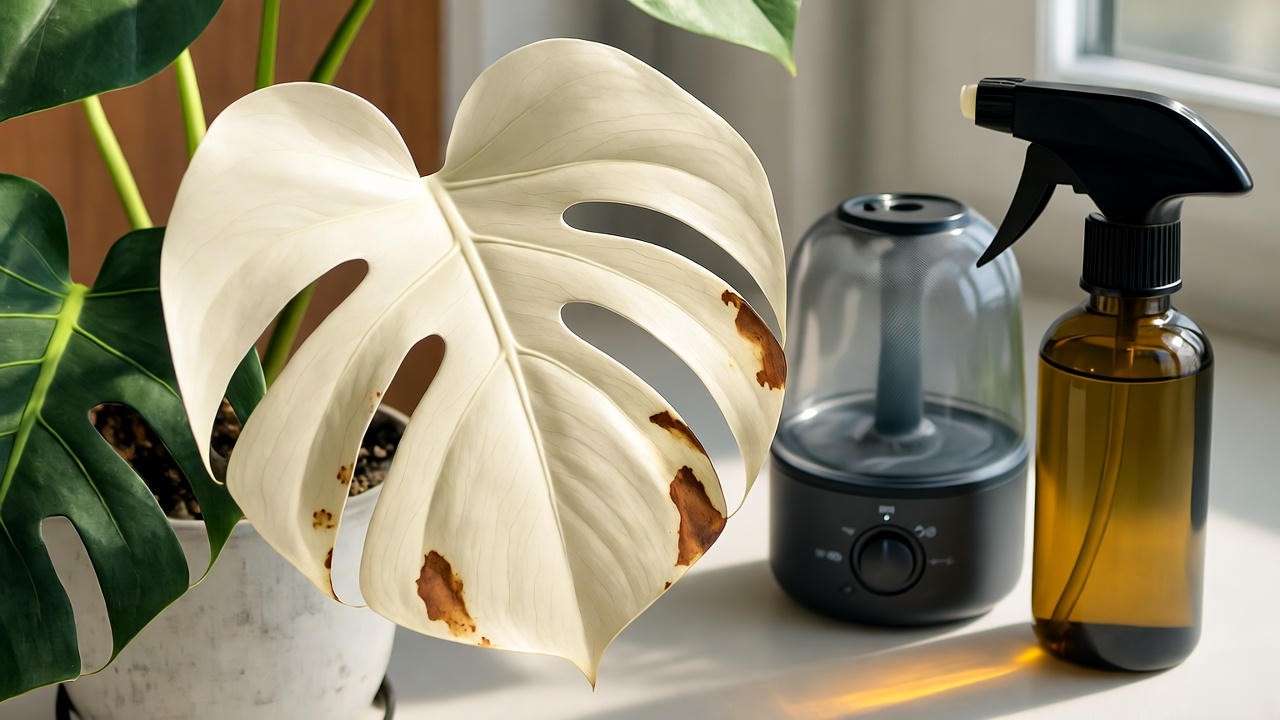
Styling and Displaying Your White Monstera 🏡
A white monstera is a statement piece, perfect for elevating your home’s aesthetic. Train it on a moss pole for a dramatic, climbing effect, or let it trail from a hanging basket for a cascading vibe. Pair it with neutral pots to highlight its variegated leaves or bold colors for a pop of contrast. It shines in boho, minimalist, or tropical-inspired spaces. Example: Instagram plant influencer @LeafyVibes showcases a Thai Constellation on a wooden trellis against a white wall for a clean, modern look. Group it with other aroids like philodendrons or anthuriums for a lush indoor jungle. Ensure the display area has adequate light and space for growth—monsteras can reach 3-6 feet indoors with proper care. Rotate the pot monthly to prevent leaning toward light sources.
FAQs About White Monstera Care ❓
Q: Why is my white monstera turning yellow?
A: Yellow leaves often indicate overwatering or poor drainage. Check the soil; if soggy, reduce watering and ensure the pot has drainage holes. Repot if root rot is suspected.
Q: Can I grow a white monstera in low light?
A: Low light can cause variegation loss and leggy growth. Aim for bright, indirect light to maintain its stunning patterns. Supplement with a grow light if needed.
Q: How often should I mist my white monstera?
A: Misting lightly every few days can help, but a humidifier or pebble tray is more effective for consistent 60%+ humidity.
Q: Why are my white monstera’s leaves browning?
A: Browning tips usually stem from low humidity or over-fertilizing. Increase humidity and flush the soil with water to remove excess salts.
Q: Is it normal for my white monstera to grow slowly?
A: Yes, variegated monsteras grow slower due to less chlorophyll. Ensure optimal light, water, and nutrients to support healthy growth.
Conclusion: Your Journey to a Thriving White Monstera 🌟
Caring for a white monstera plant is a rewarding adventure that blends art and science. By providing bright, indirect light, high humidity, and well-draining soil, you’ll keep its variegated leaves vibrant and healthy. Regular watering, balanced fertilizing, and proactive pest control will ensure your plant thrives for years. Whether you’re pruning for shape or propagating to share the love, these expert-backed tips empower you to succeed. Your white monstera isn’t just a plant—it’s a showstopper that elevates your space and sparks joy. Ready to make it the star of your home? Share your monstera journey in the comments or explore our guides on Monstera Care 101 or Top Variegated Plants for Beginners for more inspiration! 🌿

